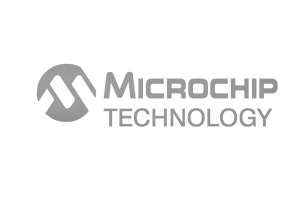MRF24J40T-I/ML Overview
The MRF24J40T-I/ML is a highly integrated 2.4 GHz IEEE 802.15.4-compliant RF transceiver designed for low-power wireless applications. It supports robust data communication with a maximum data rate of 250 kbps, making it ideal for ZigBee, wireless sensor networks, and other short-range wireless systems. This device offers seamless SPI interface compatibility, facilitating easy integration with microcontrollers. Its compact 32-pin SSOP package is tailored for space-constrained industrial and commercial designs. Engineers and sourcing specialists rely on this transceiver for reliable, low-power RF connectivity solutions. For more detailed information, visit Produttore di circuiti integrati.
MRF24J40T-I/ML Technical Specifications
| Parametro | Specifiche |
|---|---|
| Frequenza operativa | 2.4 GHz ISM Band |
| Velocità dei dati | 250 kbps |
| Modulazione | O-QPSK (Offset Quadrature Phase Shift Keying) |
| Transmit Output Power | +3.5 dBm (typical) |
| Receiver Sensitivity | -100 dBm (typical at 1% PER) |
| Tensione di alimentazione | 2.7 V to 3.6 V |
| Interfaccia | SPI (Serial Peripheral Interface) |
| Pacchetto | 32-pin SSOP |
| Temperatura di esercizio | Da -40 a +85 °C |
MRF24J40T-I/ML Key Features
- Integrated 2.4 GHz RF Transceiver: Enables reliable wireless connectivity with minimal external components, reducing overall system complexity and cost.
- IEEE 802.15.4 Compliance: Ensures interoperability with ZigBee and other low-rate wireless personal area network protocols, facilitating easy adoption.
- Basso consumo energetico: Optimized for battery-operated devices, extending operational life in sensor and IoT applications.
- Robust Receiver Sensitivity: Supports communication over longer distances or in environments with interference, improving network reliability.
- Flexible SPI Interface: Simplifies integration with a wide range of microcontrollers and processors, enhancing design versatility.
- Compact 32-pin SSOP Package: Fits into space-constrained designs common in industrial and commercial products.
- Ampio intervallo di temperatura operativa: Suitable for harsh environments, ensuring dependable performance across varied industrial conditions.
MRF24J40T-I/ML Advantages vs Typical Alternatives
This transceiver stands out with its excellent receiver sensitivity and integrated RF functionality, offering improved link quality and lower power operation compared to typical 2.4 GHz modules. Its compliance with IEEE 802.15.4 ensures broad protocol support, while the compact form factor and SPI interface provide design flexibility and ease of integration. These factors combine to deliver a reliable, efficient wireless solution suited for demanding industrial and commercial environments.
🔥 Prodotti più venduti

IC caricabatterie lineare BQ24075 di Texas Instruments - Pacchetto QFN da 5 x 4 mm

Modulo sensore di corrente INA219 di Texas Instruments - Pacchetto SOIC, monitoraggio di precisione

Riferimento di tensione di precisione LM4041 di Texas Instruments - Pacchetto SOT-23

Amplificatore operazionale audio OPA2134 di Texas Instruments - Doppio, ad alte prestazioni, pacchetto SOIC-8
Applicazioni tipiche
- Wireless sensor networks where low power consumption and reliable data transmission over short distances are critical, such as environmental monitoring and smart metering systems.
- Home and building automation systems, providing robust wireless communication for lighting control, HVAC management, and security devices.
- Industrial automation applications requiring scalable, low-latency wireless links for monitoring and control of machinery and processes.
- Consumer electronics that benefit from compact, low-power wireless connectivity, including remote controls and wireless game controllers.
MRF24J40T-I/ML Brand Info
The MRF24J40T-I/ML is part of a family of RF transceivers developed to meet stringent industrial standards for wireless communication. The product is engineered to deliver consistent performance in demanding environments, backed by thorough testing and quality assurance protocols. Its manufacturer focuses on providing semiconductor solutions that balance integration, power efficiency, and reliability, making this device a preferred choice for engineers designing next-generation wireless systems.
FAQ
What communication protocols does this transceiver support?
This device supports the IEEE 802.15.4 standard, which underpins protocols like ZigBee and other low-rate wireless personal area networks. This ensures compatibility with a wide range of wireless communication protocols used in industrial and commercial applications.
🌟 Prodotti in evidenza

"Acquista il comparatore di tensione di precisione MAX9312ECJ+ in contenitore DIP per prestazioni affidabili".

QCC-711-1-MQFN48C-TR-03-1 Bluetooth Audio SoC with MQFN48C Package

Modello 0339-671-TLM-E - Pacchetto TLM-E ad alte prestazioni per funzionalità avanzate

1-1415898-4 Alloggiamento connettore, filo elettrico-scheda, presa, confezionato
How does the power consumption of this transceiver impact battery-operated devices?
The transceiver is optimized for low power consumption, which significantly extends battery life in portable and wireless sensor applications. Efficient power management modes reduce energy use during idle or standby periods without compromising communication performance.
What are the advantages of the SPI interface in this device?
The SPI interface allows fast and flexible communication between the transceiver and microcontrollers or processors. It simplifies hardware design and software development, enabling quick integration into various embedded systems.
📩 Contattaci
Can this device operate reliably in harsh temperature environments?
Yes, the transceiver is designed to operate within a temperature range from -40??C to +85??C, making it suitable for industrial environments where temperature extremes are common. This ensures consistent wireless performance under varying conditions.
What packaging options are available, and how do they benefit design engineers?
The device comes in a compact 32-pin SSOP package, which provides a small footprint for space-constrained applications. This packaging choice facilitates easier PCB layout and integration into compact wireless modules or devices.






